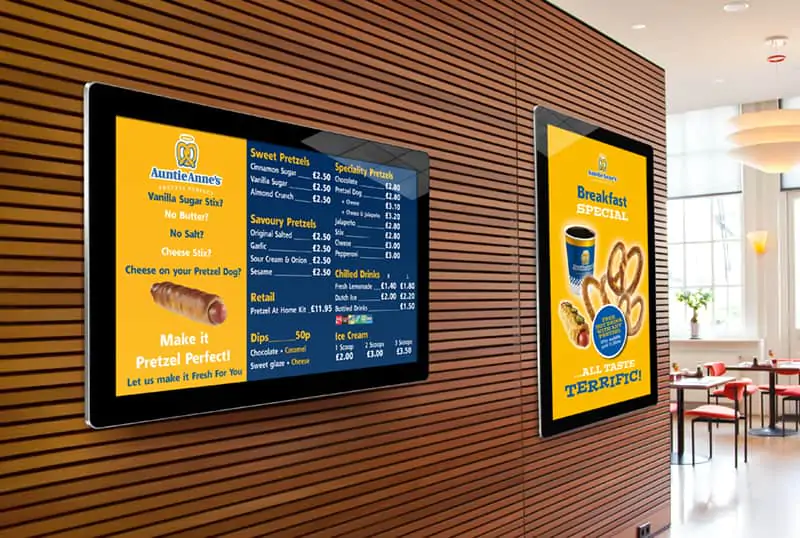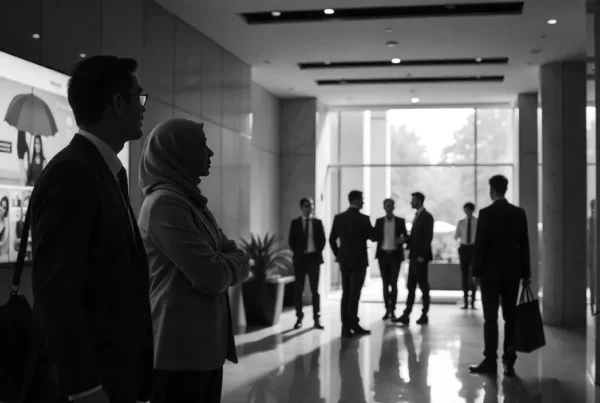As digital signage becomes more common in busy restaurants and hotels, it has become more important than ever to make sure digital signage is secure. Because of interactive digital signage software and advanced signage technology, connected displays might become vulnerable to cyberattacks, takeover by unauthorized content, or ransomware. Whether you are in the restaurant industry, provide digital signage services for others, or simply want to use free digital signage software, knowing about security risks and best practices is very important for your brand, your customers, and your profits.
Why Digital Signage Security Matters
Often, digital signage networks are used in many locations, work on different operating systems, and are linked to POS or back-office systems. This makes it possible for attacks to happen from many sides.
- Network Exploits: If your digital signage players are not protected, it becomes possible for malware or middleman attacks to threaten their software.
- Weak Authentication: Failing to set new login credentials or not using multi-factor authentication puts your digital signage at risk of being accessed by unauthorized users.
- Content Injection: An attacker can trick your digital signage or lobby screens and show unsuitable or harmful content that could ruin your reputation.
- Physical Tampering: Unlocked kiosks and unguarded media players can be taken, hardware reset, or have their firmware changed by someone with bad intentions.
If these threats are not addressed, it may result in systems being down, facing legal consequences, and customers losing confidence in the company. Making sure digital signage is safe in the hospitality, retail, and corporate communications industries is as critical as locking your storefront.
Key Threats to Your Digital Signage Network
Network Vulnerabilities
Any digital signage software, regardless of where it is hosted, needs data transmission. With HTTPS and secure APIs, attackers cannot view, modify, or repeat any updates or commands from the system.
Authentication Gaps
The passwords for many digital signage players or CMS systems are still set to the default ones. If unique and strong credentials, SSO, and role-based access control are not properly used, it becomes easy for attackers to get more access.
Content Management Weaknesses
Vulnerable CMS platforms and open ways to upload content give cybercriminals a chance to upload dangerous scripts or unauthorized files. This issue is most likely to occur in settings where a lot of users are present, such as reseller digital signage programs.
Physical and Firmware Attacks
Displays and media players are open to access directly if there are no kiosk-mode lockdowns or safe enclosures. Trying to steal your digital signage solution, attackers may replace the SD card, add malicious firmware, or take your hardware to analyze it.
How Nento Fortifies Digital Signage Security
No matter what service or software you use at Nento, security is always included. Here are the ways we protect your electronic screens:
1. End-to-End Encryption
Everything on the digital menu board and any corporate news is transferred with HTTPS and TLS encryption. Securing APIs makes it impossible for hackers to tamper with the content and keeps the data safe.
2. Multi-Level Access Control
On our platform, permissions are given at the role level. Managers can decide which users can change the layout of signs, approve updates, or see the reports on playback. SSO and MFA make it harder for unauthorized people to get into the CMS and digital signage player programs.
3. Automated Security Updates
Security and critical patches are automatically applied, so you do not have to download them or stop your work. If you choose our enterprise digital signage product or try a freeware digital signage software, you’ll always get the newest protection from existing and new threats.
4. Hardened Player Environments
These media players operate in a locked-down way on both Windows IoT and Linux operating systems. Firewalls included in the operating system stop unauthorized connections from outside and also prevent any attacks that come from USB or Bluetooth devices.
5. Remote Monitoring & Real-Time Alerts
You are able to monitor your devices, content, and security at all times using our digital signage services. If you get alerts in real-time, you can react fast to login failures, problems with content updates, or devices being offline.
Securing Interactive and Restaurant Signage
Interactive Digital Signage Software
Using touchscreens is exciting, but it creates some security problems—attackers can inject harmful code into web views or access the device through USB ports without permission. Every piece of data entered in Nento’s modules is verified, web content is isolated, and only approved content can be accessed.
Digital Signage for Restaurants
Restaurants need to be adaptable and secure at the same time. During the busiest times, your digital menus and tablets should not let anyone change the prices. Because Nento’s CMS is secure, every menu update is checked, tracked, and reversible to protect your company and profits.
Free Templates for Restaurants
We put our free restaurant design templates through serious security checks. All pre-designed digital menus and promotion screens are safe from vulnerabilities and easily work with Nento’s powerful encryption and security features.
Reseller Digital Signage: Secure by Design
For resellers, it is important to stand out with solutions that do not fail. Because Nento’s software is already secured, clients can use your digital signage service without worrying about security issues.
- A CMS that can be branded together with Secure APIs
- Software can be purchased in large quantities and managed from the same central location.
- First access to important security improvements & updates
Guarantee your clients’ confidence by protecting their displays from both online and offline threats.
Building a Secure Foundation for Digital Signage Success
You need to keep securing your digital signage network on a regular basis. Follow these suggestions when you begin:
- Check Your Network: Find all the devices, connections, and versions of the software in use.
- Enforce Strong Credentials: Require users to use special passwords, single sign-on, and multi-factor authentication.
- Apply Patches Promptly: Update CMS and media players automatically whenever there are new patches.
- Lock Down Hardware: Unattended displays should be locked down with kiosk mode, physical locks, and by adding surveillance.
- Monitor Continuously: Use remote monitoring to discover and handle any unusual activity.
If you build security into your digital signage system at the start, you reduce risks, protect your customers’ trust, and ensure everything continues to work smoothly.
Take Control of Your Digital Signage Security
Want to make your screens safer through security measures, whether they are in restaurants, kiosks, or offices? Team up with Nento to get an all-in-one digital signage solution that includes easy-to-use software, hardy player software, and valuable services. Reach out to us now to arrange a security review and make your signage more secure against upcoming threats.
FAQs: Digital Signage Security
What makes digital signage security different from general IT security?
To secure digital signage, extra measures, including locking down kiosks and limiting the content shown, are needed, as regular network security is not enough.
Can I use digital signage freeware software securely?
Definitely—as long as the source is credible, you place it on a safe, partitioned network with HTTPS encryption, strong login, and updated patches.
How do I secure my digital signage player software?
Select players that run a secure OS, have kiosk mode, have built-in firewalls, block unnecessary ports, and get security updates automatically.
What security features should I look for in interactive digital signage software?
Some of the main features are input validation, sandboxing for web views, permission settings for users, and encryption for all data transfers.
How often should I review my digital signage security posture?
Every three months, go through access logs, inspect the software versions, and evaluate the security of the devices. Set up constant monitoring to get notified immediately about significant events.








